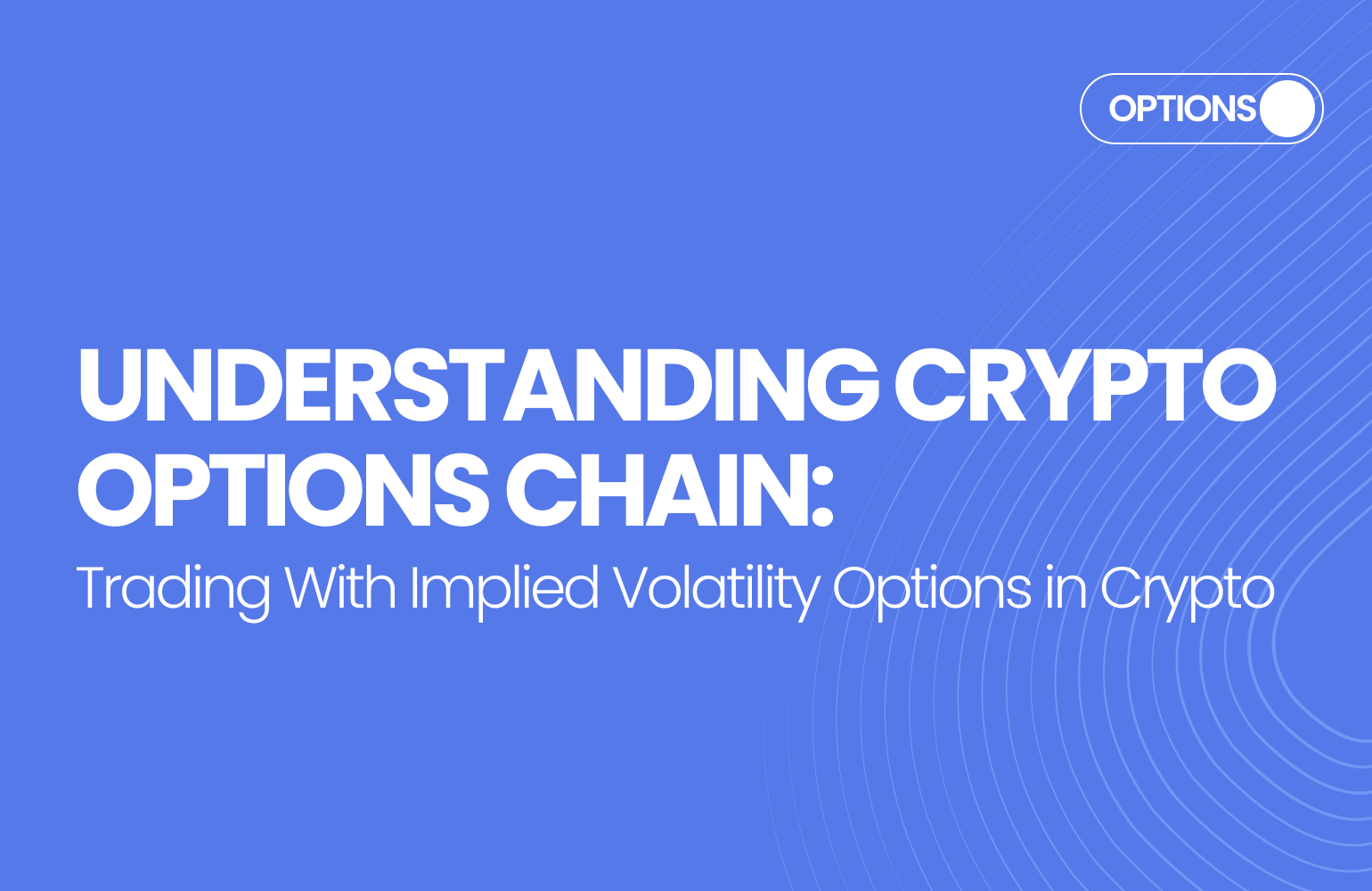Key Takeaways
- Bid/Ask = liquidity signals
- Open Interest = market participation
- Volume = activity confirmation
- IV = expectations of future volatility
Looking at a crypto options chain for the first time can feel overwhelming. With rows of numbers, cryptic abbreviations, and real-time fluctuations, it’s easy to miss what really matters.
But once you understand key elements like bid, ask, open interest (OI), and volume, you’ll gain a serious edge. These metrics aren’t just data, they’re powerful signals that reveal market sentiment, liquidity, and trading opportunities.
What Is an Options Chain?
An options chain is a table listing all available options contracts for a given asset, typically sorted by strike price and expiry.
For each strike and expiry combination, the chain displays:
- Call and put contracts
- Premium prices (bid/ask)
- Volume and open interest
- Implied volatility (IV)
Why Options Chain Matters
Reading the options chain helps traders:
- Identify active strike levels
- Spot unusual options activity
- Gauge market sentiment and liquidity
For beginners, understanding how to read option chain data is a critical skill.
If you trade BTC, ETH, or SOL options on Pi42, the crypto options chain is your decision-making dashboard.
Key Terms in the Options Chain
- Strike Price
Fixed price at which the option buyer can buy (call) or sell (put).
Central to determining whether an option is ITM (in-the-money) or OTM (out-of-the-money). - Bid and Ask
- Bid: The highest price a buyer is willing to pay
- Ask: The lowest price a seller is willing to accept
- Tip: The tighter the bid-ask spread, the more liquid the option.
- Last Price
The price at which the last trade occurred.
May not reflect current bid/ask, always refer to live prices. - Volume
Number of contracts traded during the current day.
High volume = high activity = potential interest. - Open Interest (OI)
Outstanding contracts not yet closed.
Higher OI = more participation = more credibility of the strike. - Implied Volatility (IV)
Market’s forecast of future volatility.
Higher IV = costlier options; often a sign of expected big moves.
Learning how to read options chain correctly ensures you don’t misinterpret these metrics.
How to Read an Options Chain
Let’s break down a typical row in the BTCUSD option chain:
| Strike | Bid | Ask | Last | Volume | OI | IV |
|---|---|---|---|---|---|---|
| 60,000 | $350 | $370 | $360 | 120 | 850 | 58% |
Call Side Analysis
- Buyers are bidding $350, sellers are asking $370
- Last trade at $360
- 120 contracts traded today
- 850 contracts open
- IV at 58% suggests moderate volatility priced in
Pro Tip: Use OI + Volume together:
- High OI + High Volume = strong interest
- High OI + Low Volume = holding phase
- Low OI + High Volume = fresh positions opening
If you’re looking at a cryptocurrency option chain, focus on liquidity and spreads before placing trades.
Using the Options Chain to Spot Trade Setups
- Find Liquidity Zones
Look for strikes with high volume and OI → easier entries and exits. - Track Unusual Options Activity (UOA)
Sudden volume spikes or IV surges = possible insider sentiment.
Use UOA alongside technicals or news. - Plan Your Entry with Bid/Ask Precision
Avoid overpaying → place limit orders near bid.
Use midpoint pricing for better fills. - Gauge Market Expectations with IV
High IV? Expect volatility, great for selling premium (if skilled).
Low IV? Good for cheap option buying.
For anyone wondering about option chain crypto analysis, these four steps form the foundation.
Options Chain Insights for Crypto Traders
BTC vs. ETH vs. SOL Chains
- BTC chains: tighter spreads, deeper OI
- ETH: higher IV due to DeFi/NFT events
- SOL: lower liquidity, watch OI carefully
Weekly vs. Monthly Expiries
- Weekly chains = fast trades, quick decay
- Monthly chains = more stable, better for hedging
Want to know how to read crypto option chains? Always start by comparing expiries and liquidity.
Pro Tip: On Pi42, use filters to sort chains by:
- Expiry
- OI
- Premium
- Strike proximity to spot
Conclusion
The crypto options chain isn’t just a table, it’s a window into what the market is thinking. When you learn to read a bid, ask, open interest, and volume, you gain a tactical edge.
Whether you’re buying BTC calls or selling ETH puts, let the crypto options chain guide your decisions.
Still asking yourself: what does option chain indicate? It reflects market expectations, liquidity, and sentiment in real time.
📣 CTA: Ready to put your knowledge into practice? Explore the live crypto options chain on Pi42 and trade smarter today.
Read More
What are Call and Put Options in Crypto
Difference Between Options and Futures: Explained for Crypto Traders
Options Market-Making in Crypto: Risk Management and Edge Explained

